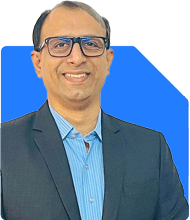Mahesh Padmanabhan | Answer |Ask -Follow
Tax Expert - Answered on May 05, 2023
He is a member of The Institute of Chartered Accountants of India and has a degree in cost accounting from the Institute of Cost Accountants of India.
He is also a qualified information systems auditor. ... more

What are the tax implications on the foreign company ESOP sell profits?
I am assuming that you are referring to sale of foreign shares held under ESOP grant held by an employee.
In case you have held the ESOP share for more than 24 months then it would be treated as Long Term asset. You could index the cost and any gain resulting from the calculation would be taxed at 20%
If the period of holding is shorter then the gain (if any) would be taxed at your slab rate.
You may like to see similar questions and answers below
Samraat Jadhav |2498 Answers |Ask -Follow
Stock Market Expert - Answered on Jun 06, 2024
Samraat Jadhav |2498 Answers |Ask -Follow
Stock Market Expert - Answered on Jun 11, 2024
T S Khurana |536 Answers |Ask -Follow
Tax Expert - Answered on Oct 22, 2025
Dr Dipankar Dutta |1837 Answers |Ask -Follow
Tech Careers and Skill Development Expert - Answered on Dec 05, 2025
Dr Shyam Jamalabad |108 Answers |Ask -Follow
Dentist - Answered on Dec 05, 2025
Dr Shyam Jamalabad |108 Answers |Ask -Follow
Dentist - Answered on Dec 05, 2025
Dr Shyam Jamalabad |108 Answers |Ask -Follow
Dentist - Answered on Dec 05, 2025
Dr Dipankar Dutta |1837 Answers |Ask -Follow
Tech Careers and Skill Development Expert - Answered on Dec 05, 2025
Ulhas Joshi |280 Answers |Ask -Follow
Mutual Fund Expert - Answered on Dec 05, 2025
Dr Dipankar Dutta |1837 Answers |Ask -Follow
Tech Careers and Skill Development Expert - Answered on Dec 04, 2025
Ravi Mittal |676 Answers |Ask -Follow
Dating, Relationships Expert - Answered on Dec 04, 2025
Anu Krishna |1745 Answers |Ask -Follow
Relationships Expert, Mind Coach - Answered on Dec 04, 2025
Anu Krishna |1745 Answers |Ask -Follow
Relationships Expert, Mind Coach - Answered on Dec 04, 2025




























